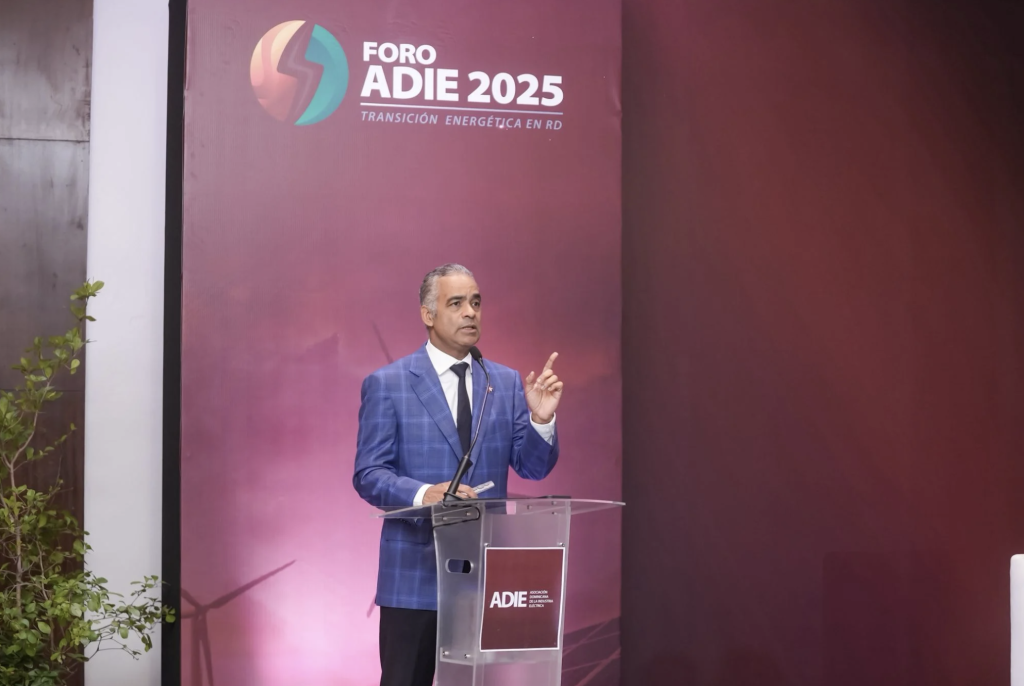
In a strategic move to buttress its national electric system, the Dominican government is planning a massive 54% increase in installed thermal energy capacity by 2028. This ambitious expansion, part of the nation’s sustainable transition plan, aims to guarantee stability and security amidst growing energy demands.
Minister of Energy and Mines, Joel Santos, unveiled the roadmap during the “Energy Transition in the D.R.” forum, organized by the Dominican Association of the Electric Industry (ADIE). The plan centers on sustainability, security, and confidence as the foundational pillars for the sector’s development.
Thermal energy (or energia termica) is essentially the energy of heat. In the context of electricity generation, thermal power plants (which can use sources like natural gas, coal, or even geothermal energy) convert this heat energy—often by boiling water to create steam—into mechanical energy to drive turbines, ultimately generating electricity.
The capacity surge will be driven by eight new energy projects, adding a total of 3,317 MW to the national grid by 2028. This includes:
2,311 MW from new thermal projects.
1,006 MW from renewable sources, including 300 MW of battery storage.
Minister Santos stressed that the national energy demand is projected to grow between 4% and 5% annually, necessitating a comprehensive and proactive approach to maintain system stability. “We have to increase the energy supply and develop the sector beyond the point of economic growth. Planning must become the basis of development,” Santos stated.
The government’s plan extends beyond generation, incorporating significant infrastructure upgrades:
Transmission: Over US$450 million is earmarked for transmission projects over the next three years.
Modernization: Annual investments between US$150 million and US$200 million are designated for the bulk purchase of meters, transformers, and the enhancement of telemeasurement systems.
Furthermore, the Minister highlighted the legislative efforts underpinning this growth, noting that the Energy Efficiency Law is currently before Congress. Work is also underway to draft a legal framework for nuclear energy, all aimed at strengthening the institutional and sustainable foundations of the national electric system.
Minister Santos participated in a panel on Energy Transition alongside Roberto Herrera, president of the ADIE, and international renewable energy expert, Luciano Castillo.
Key thermal energy projects and general plans underway in the Dominican Republic’s power sector:
The Dominican government is working on a plan to significantly increase the installed thermal energy capacity by 54% by 2028 as part of a sustainable transition strategy. Key thermal energy projects and general plans underway are:
CEPM 37 MW expansion project:
Developer: Consorcio Energético de Punta Cana (CEPM).
Details: This is an extension of an existing power plant, featuring a 37 MW flexible thermal plant supplied by Wärtsilä.
Purpose: The plant uses dual-fuel engines (LNG or conventional fuel oil) and is designed to provide the crucial grid balancing needed as CEPM integrates a large amount of new solar and wind renewable energy. Its fast starting and stopping capability is key for grid flexibility.
SIBA Energy Combined Cycle Plant:
A combined cycle operation from SIBA Energy has recently begun, increasing the national electric generation by 260 MW. This is a significant addition to the country’s thermal capacity.
Beyond electricity generation, there are thermal projects focused on providing heating and cooling services. CEPM developed the first District Energy system in the Dominican Republic and the Caribbean. This system uses residual heat (waste heat from electricity generation, specifically exhaust gases and cooling water from Wartsila engines) to produce High-Temperature Hot Water (HTHW). The HTHW is then piped to nearby hotels (via a 14.5 km pipeline) to power absorption chillers for ice water (air conditioning) and heat exchangers for Sanitary Hot Water (SHW).
While not conventional fuel-based thermal power, geothermal energy is a significant area of thermal resource investigation. A study, “Specific Agreement for the Evaluation of the Geothermal Potential of the Dominican Republic” (Acuerdo Específico para la Evaluación del Potencial Geotérmico de la República Dominicana), is underway, financed by the Inter-American Development Bank (IDB). French and Dominican geologists and geochemists are conducting rock and water surveys in multiple areas to determine the country’s geothermal potential. Under study are areas of recent volcanism, such as the Constanza-Las Yayas de Viajama axis.
Read more:
Ministry of Energy
CEPM
Wartsila
N Digital
22 October 2025

